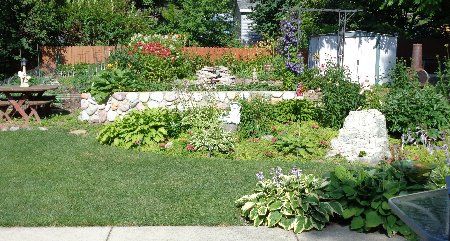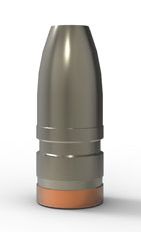Have a Question?
August 2015
You can subscribe to this Newsletter if you sign up for an account with Titan Reloading.
CLICK HEAR TO REGISTER AN ACCOUNT
CLICK HERE To browse an archive of past newsletters.
 AUGUST 2015 NEWSLETTER
AUGUST 2015 NEWSLETTER
This month I want to share our back yard with all of you. I call it “Robin’s Creation”. The only things missing in the picture are the sounds of the birds, the smell of the flowers and of course my bottle of Budweiser.

Robin and I are truly enjoying all the friends we have made through Titan Reloading and look forward to many more. Feel free to contact us. When possible, please email us rather than call. Due to our limited phone system and staff we are able to respond to your questions quicker via email. Please include your full name or order ID number with any order inquiries. Service and Support is our top priority. As always, you will find many answers to questions in the “FAQ” and “Help Videos” areas of our website www.titanreloading.com . Check us out on Google+ and Facebook .
Dennis / Titan Reloading
FEATURED PRODUCTS:
Lee .22 Caliber Bullet Molds

All Lee Mold Blocks are made from aluminum because of the exceptional molding qualities.
The mold cavities are CNC machined for unmatched roundness and size control.
Only Lee guarantees roundness of .001″ or less.
Most bullets from Lee molds can be used as cast without sizing.
LEE DOUBLE CAVITY BULLET MOLD C225-55-RF
Lee Double Cavity Bullet Mold C225-55-RF produces a .225 diameter 55 grain Round with Flat nose bullet suitable for .22 Caliber.
Lee mold blocks are machined from aluminum blocks because of its exceptional molding qualities. Aluminum molds heat up and cool down faster than iron or steel molds so good bullets can usually be produced after only a few casts. In addition, they are one-third the weight of iron or steel mold blocks for less fatigue during extended casting sessions. To ensure the best possible bullets, mold block halves are clamped together and then lathe-bored for unmatched roundness and size control. All Lee 1- and 2-cavity molds come with mold handles and hard anodized sprue plates.
LEE 6 CAVITY BULLET MOLD C225-55-RF
Lee 6 Cavity Bullet mold C225-55-RF produces a .225 diameter 55 grain bullet suitable for use with .22 caliber.
Made for heavy duty volume production. The mold and blocks are machined from commercial quality aluminum and feature steel bushing and alignment pins. Lee 6-Cavity molds come with a cam operated, hard-anodized sprue plate which is held tightly with tempered spring washers at each end. The handle attached to the sprue plate is included.
NOTE: Handles to open and close this mold sold separately. item 90005
INSIGHT OF THE MONTH:
PROPER POWDER STORAGE
Some years ago I read an article by Charles “Skeeter” Skelton, the handgun editor of Shooting Times magazine. He told a story of how he had loaded up what he called “stout” loads for a friend. The friend tried to shoot a range bull that was down and needed to be killed. The rounds went “poop” and bounced off the bull’s skull at point blank range. Skeeter went back and checked his powder measure which had been left with the powder in it for quite some time prior to cooking up the loads. When he dumped the powder out he found lots of it adhering, actually melted into the plastic hopper. He realized that the chemical reaction between the powder and the plastic hopper caused degradation of the powder. He was correct as this is the first reasons you should empty the powder back into the bottle after a reloading session.
When I first started reloading, I recall reading from loading manuals of the day that there were a number possible problems from leaving powder in the hopper.
1. Powder attacking the plastic hopper and degrading the powder as in the previous story. Nitrocellulose powders are extruded thru use of a solvent, Acetone mainly, to soften it and make it plastic for processing it. Acetone can melt or soften polystyrene plastics. Nitroglycerine-augmented nitrocellulose powders (double-base) involve even more solvents to introduce the EXTRA nitro into the guncotton.
2. Confusion later as to which powder is in the hopper leading to using the wrong amount/weight of powder in a load.
3. Powder being adversely affected by UV light (from a window or fluorescent lights), leading to decomposition or change in burning rate. Powder comes in opaque cans for a reason, powder will degrade in light over time.
4. Degradation of the powder from exposure to humidity because a hopper will not seal as well as the powder bottle or jug. Smokeless powder is hydrophilic (it will absorb humidity from the air) and when it absorbs water, it swells and this will change the burning characteristics of the powder. Only the top half inch or so will swell like this. This makes any later charges thrown from that powder less powerful than the first charges thrown from dry powder, but not consistently so. Most basement reloading rooms have higher humidity than any other room in the house (excepting the bathroom). The manufacturers go to great pains to maintain consistent moisture levels for every batch they make. For that reason alone you should store your powder in a tightly sealed original can after each loading session.
I highly recommend using the proper powder storage procedures and as a final point of emphasis is the following statement found on the Hodgdon’s reloading data website:
“Powder left in the reloader’s powder measure hoppers for extended periods, overnight or several days, should be avoided. Powder needs to be stored in original containers ONLY, when not in use. Numerous modern smokeless powders are double base in construction, containing both Nitrocellulose and Nitroglycerine.”
